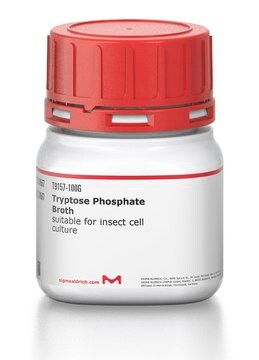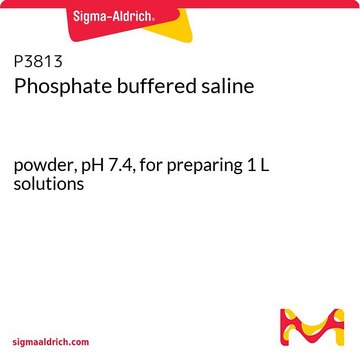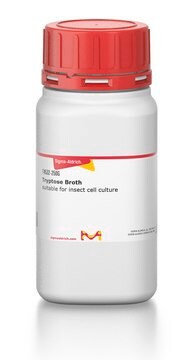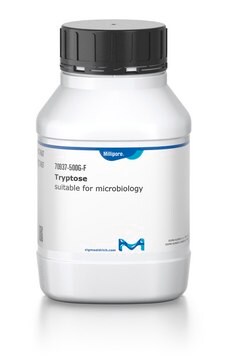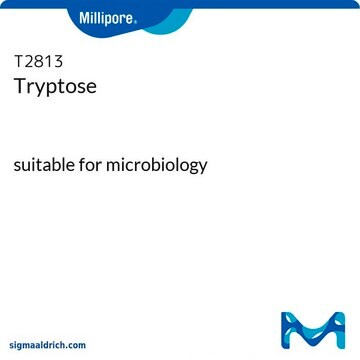T8782
Tryptose Phosphate Broth
buffered powder, Microbiologically tested.
Synonyme(s) :
Tryptose Broth
About This Item
Produits recommandés
Forme
buffered powder
Qualité
Microbiologically tested.
Description générale
Application
- of Leibovitz L-15 medium for the culture of BME26 tick embryo cell line
- of M199 medium for the preparation of chick embryo fibroblasts (CEFs)
- of Glasgow′s minimum essential medium (GMEM) for culturing baby hamster kidney (BHK-21) before transfection
Actions biochimiques/physiologiques
Composants
Produit comparable
Souvent commandé avec ce produit
Code de la classe de stockage
11 - Combustible Solids
Classe de danger pour l'eau (WGK)
WGK 1
Point d'éclair (°F)
Not applicable
Point d'éclair (°C)
Not applicable
Équipement de protection individuelle
Eyeshields, Gloves, type N95 (US)
Certificats d'analyse (COA)
Recherchez un Certificats d'analyse (COA) en saisissant le numéro de lot du produit. Les numéros de lot figurent sur l'étiquette du produit après les mots "Lot" ou "Batch".
Déjà en possession de ce produit ?
Retrouvez la documentation relative aux produits que vous avez récemment achetés dans la Bibliothèque de documents.
Les clients ont également consulté
Articles
Detect mycoplasma contamination in cell cultures three ways: culture test, DNA stain test, or mycoplasma PCR test. Mycoplasma elimination kits rid cultures of contamination.
Detect mycoplasma contamination in cell cultures three ways: culture test, DNA stain test, or mycoplasma PCR test. Mycoplasma elimination kits rid cultures of contamination.
Notre équipe de scientifiques dispose d'une expérience dans tous les secteurs de la recherche, notamment en sciences de la vie, science des matériaux, synthèse chimique, chromatographie, analyse et dans de nombreux autres domaines..
Contacter notre Service technique
